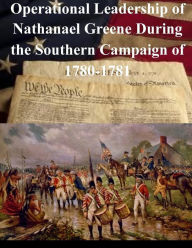Operational Leadership of Nathanael Greene During the Southern Campaign of 1780-1781 Naval
by War College
2020-03-20 11:09:08
Operational Leadership of Nathanael Greene During the Southern Campaign of 1780-1781 Naval
by War College
2020-03-20 11:09:08
With 1,000 Continentals, and slightly more militia, Nathanael Greene was assigned the mission by General Washington to stop the British in the south and to win the Revolution. During this period, the British restored South Carolina's loyalist governm...
Read more
With 1,000 Continentals, and slightly more militia, Nathanael Greene was assigned the mission by General Washington to stop the British in the south and to win the Revolution. During this period, the British restored South Carolina's loyalist government, were victorious at Savannah, Charleston, and Camden, South Carolina, and had numerous Tory sympathizers in the region. Nathanael Greene was to defeat arguably the best army in the world with few regular troops, no supplies, and no local government to call upon for assistance. Further, Greene had to contend with a civil war between the Tories and the Patriots. Despite these hurdles, Greene was able to realize success through his superb example of operational leadership. Many lessons can be applied today. He knew his enemy and accurately identified the enemy center of gravity (COG) and developed a plan to attack the British critical vulnerability, the popular support from the Tory militia. Greene did not win many tactical battles, but was able to occupy the British Army through constant engagements with his forces, which consisted of both Continentals and militia while the Patriot militia regained local support. Greene integrated the militia forces into his own regular forces and commanded a superb sense for operational logistics. Finally, Greene thoroughly understood the importance of balancing ends, ways, and means.
Less

























.jpg)



.jpg)
